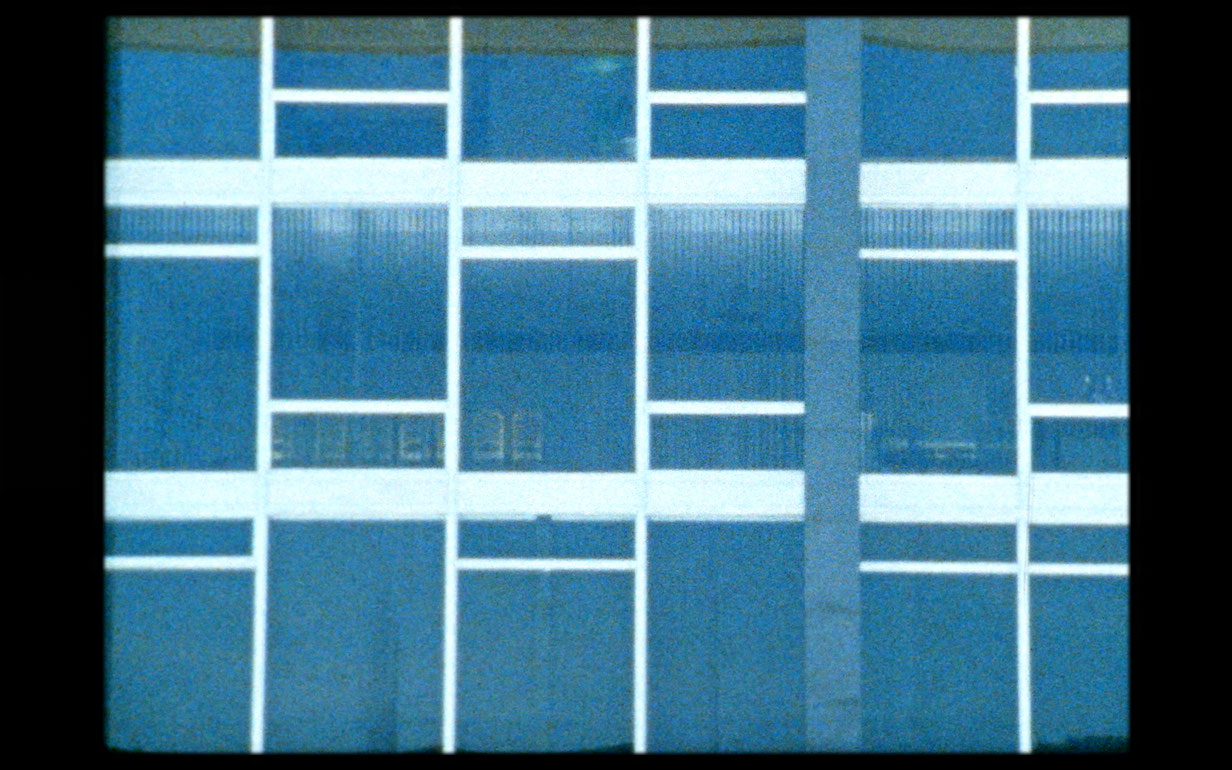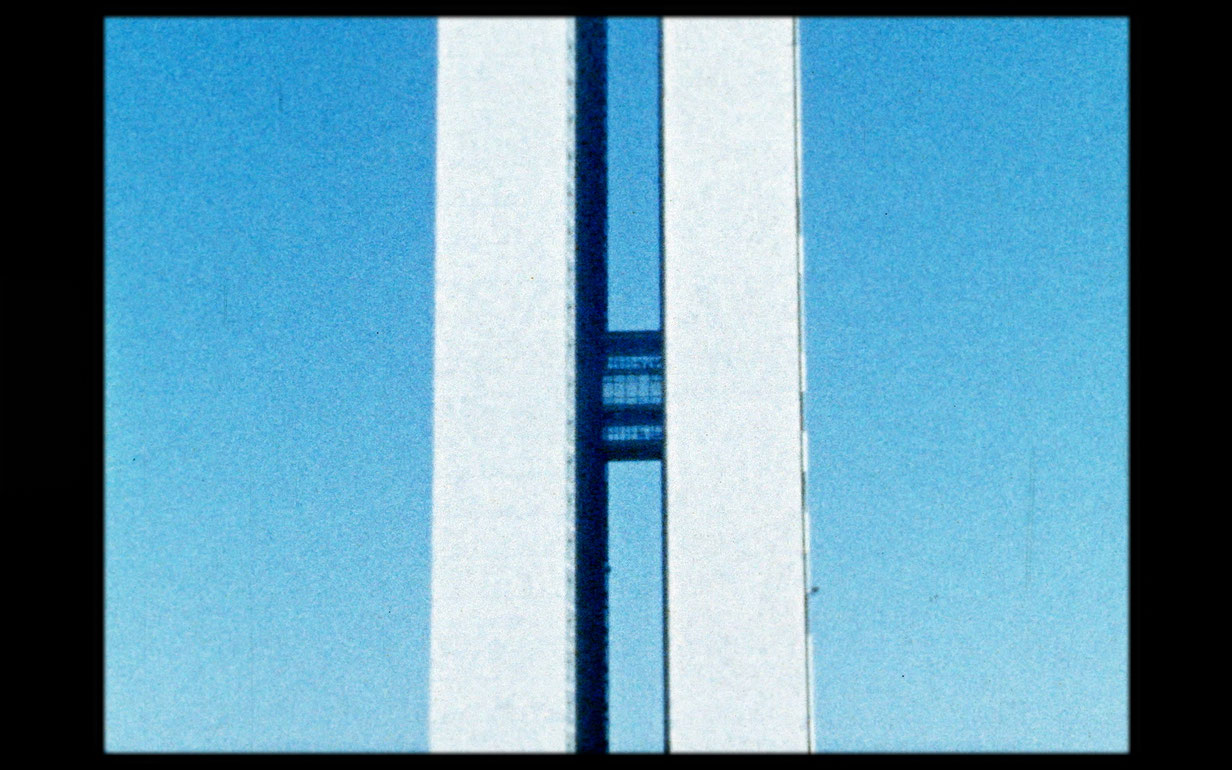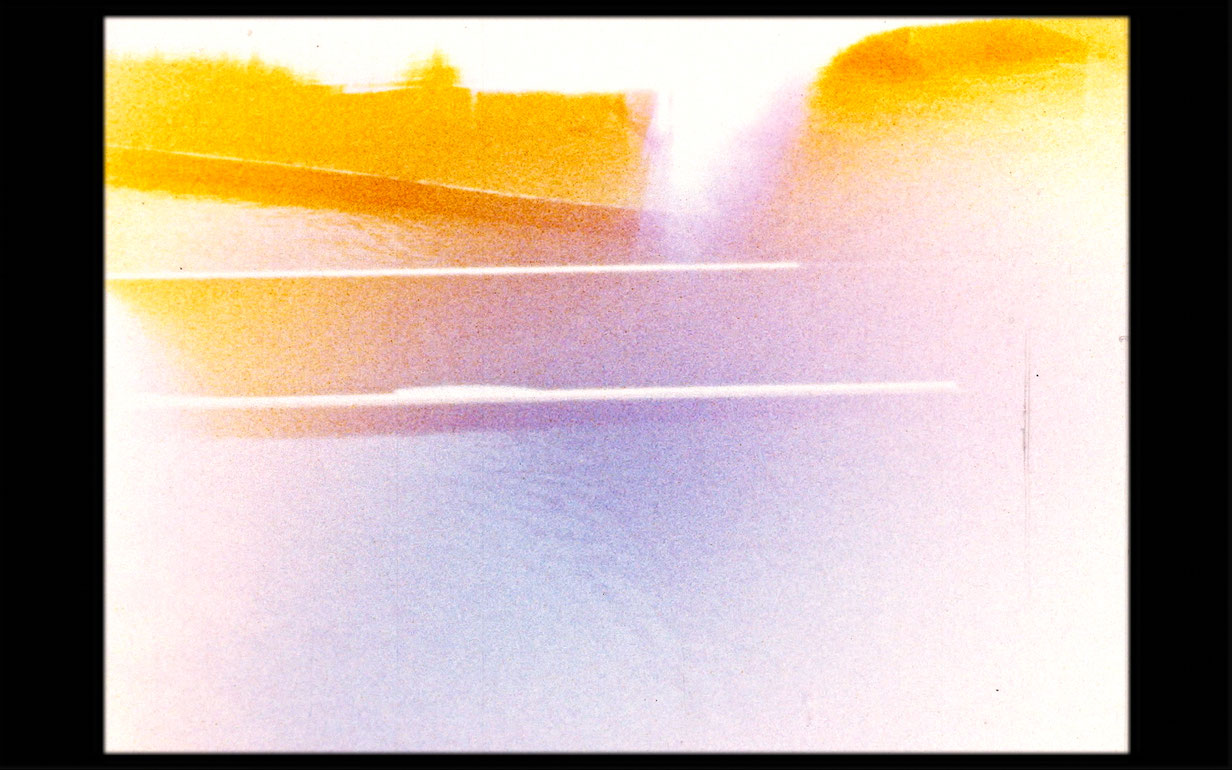Rote Wueste
Stefan Németh’s Rote Wueste stages what could be called a productive discrepancy. The source material consists of the music track of the same name by his band Innode, released on their album SYN in 2021. Inspired by the electronic soundtrack to Michelangelo Antonioni’s Il deserto rosso (1964), Rote Wueste creates an ominously swelling sound tableau interspersed with an accomplished arsenal of rhythm, which becomes ever more finely detailed and culminates in the tension of the “Now” (and the “Not now”). The present is splintered and shattered, in line with late modernist fantasies of alienation.
Coupled with this audio drama are images of a 2006 trip to and through Brasilia. Németh had taken the Super 8 reels he made at the time, while visibly under the spell of the architectural utopia that became reality in 1960, and stored them in a drawer for years. They now represent the congenially adverse counterpart to the Rote Wueste track. The editing of the coarse-grained celluloid images follows the digital angularity of the music. Over slowly increasing filter noise, we first see black and white photos of motorway exits and other monsters of mobility; then, punctuated by abrupt percussion and carried along by a creeping beat, tracking shots move past endless rows of apartment blocks and trees. After a repeatedly used blank film frame intermezzo, the second act follows: facades, pools, window fronts with bizarre reflections, concrete structures, all in color, rhythmicized into an artfully shimmering ballet of forms. Finally, the contrapuntal third act, again in black and white, shows workers on construction sites and again journeys through built-up urban hinterland – until, as it were, redeeming color shots point the way out of this seemingly lost historical magic. Music has always been in the now; utopias linked to it form its indispensable other.
(Christian Höller)
Translation: John Wojtowicz
Rote Wueste
2021
Austria
6 min



